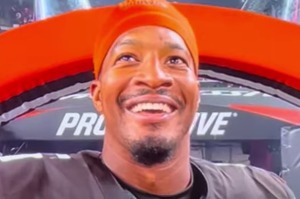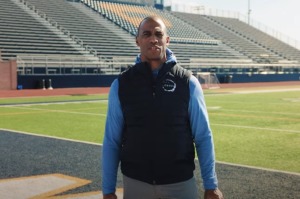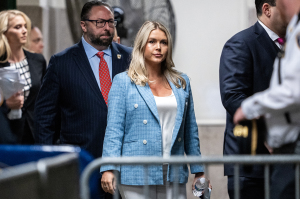United Methodist Church will Not Break Apart
“I sense that the church is stronger now than we could have ever dreamed or imagined.”
After a day of confusion and mixed emotion over an informal proposal to amicably separate the 10-millionmember United Methodist Church, the delegates to the denomination’s top legislative meeting adopted a unity resolution to confirm that the UMC is “in covenant with one another even in the midst of disagreement.” The new resolution, introduced by the Rev. John Schol of the Eastern Pennsylvania Annual Conference, overwhelmingly passed with a vote of 869-41 with 8 abstentions, on May 7th.
“As United Methodists we remain in covenant with one another, even in the midst of disagreement, and affirm our commitment to work together for our common mission of making disciples throughout the world,” the statement read.
“It’s important to send a clear message that we are unified, a United Methodist Church which is not splitting,” Schol told reporters after the vote. “I have a great deal of relief that we have affirmed our covenant, and that delegates will not leave this place divided. I believe we will come back in four years as a stronger denomination.”
The unity resolution was penned as a response to the call to amicably split the denomination. Brought informally to the floor by the Rev. Bill Hinson, the president of the evangelical Confessing Movement, the 'separation' proposal stated that the gulf between conservatives and liberals were too deep to overcome. The main issue at hand was homosexuality; during the proceedings of the 2-week General Conference, the delegates voted to uphold the ordination standards, which explicitly ban all active homosexuals from serving the church as pastors. Several days after the vote on the ordination standards, some 500 pro-gay Methodists disrupted the Conference for 35 minutes by circling around the delegates.
The proposal to separate was reportedly an unofficial consideration made by several individuals, and was not meant to reach the media and the public. Therefore, one of the leading supporters of the proposal, the Rev. James V Heidinger II – president of the evangelical Good News group, announced on May 7th that “no such resolution will be brought before this General Conference.”
However, Heidinger added that “the matter of amicable separation is now on the table for discussion by United Methodists.”
While the proposed resolution to split was never brought on to the floor, the Rev. Schol still felt the need to confirm the unity of the denomination, and noted that the passage of a unity resolution was a clear signal to block “a movement to drive a wedge in our denomination.”
Prior to the vote on the unity resolution was made, the Rev. Bruce Robbins, former top staff executive for the United Methodist Commission on Christian Unity and Interreligious Concerns, and Hinson, spoke to the delegates and tried to clarify the events of the day before.
“In our conversations on Monday night and Tuesday, some informal proposals were made,” Robbins told the conference. “They were brainstorming sessions. There was no consensus. There were papers distributed with the idea of not going beyond the room. Then on Thursday morning, Dr. Hinson addressed the Good News breakfast and shared the pain he has been experiencing. He mentioned the idea of amicable separation and the suggestion of a resolution being offered.”
Hinson later told reporters that “I stand in amazement at the combustibility of a speech made at an early morning breakfast by someone who is not even a delegate. But those are my honest feelings, and I can’t deny them for the cause of unity. Someone once said that if you sacrifice truth on the altar of unity you lose both.”
Hinson also clarified that he is not personally driven to divide the denomination.
Hinson said. “My ancestors heard (John) Wesley preach in Savannah. I am a seventh-generation United Methodist. I do have a deep sense of sadness over our church and its brokenness. Does that mean there are no bridges? Absolutely not.”
Heidinger also offered an explanation on how the informal proposal to separate reached the general floor.
“Someone who received the document made copies of it and gave it to the press. … It was assumed that the document was Bill’s (Hinson). It was not.”
Robbins told reporters that “a number of proposals were put forward. The proposals to split came from persons representing the more conservative side. My perception was that it was a document that was of great interest to many people, and one that was shared with various constituencies and copied many times. I can’t say whether one side or another released it.”
Hinson said he had not authored the proposed resolution that ignited the controversy. “I’ve never written a resolution, and if I did it would look a lot better than the one that was circulated on the floor yesterday. It was discussed, and my (Confessing Movement) leadership decided that (such a resolution) would be a very bad idea.”
Robbins said the result of the morning’s vote was that the 10 million member denomination has not considered any split. “The United Methodist Church strives and is determined to seek unity,” he said. “That is the goal for all of us. The question is how do we discern ways to build bridges over our differences? I do believe that God has a greater imagination than we do.”
However, Hinson noted that the question of amicable separation was still something to keep in mind.
“Local churches are increasingly expressing their pain,” Hinson said. “The grass-roots people are very frustrated, and it comes from a feeling of helplessness when they see the covenant we’ve put into law deliberately defied or ignored.”
Hinson said an amicable split to be “like when Paul and Barnabas decided to go their separate ways and the kingdom was enlarged.”
“Our friends on the other side say they will never leave the church, and we will never leave,” Hinson added.” That’s the standoff. If one group said, ‘I’m out of here,’ then we wouldn’t have all this talk.”
However, Robbins said that despite differences and difficulaties, there is a “desperate need” for dialogue between the two poles.
“It is extremely difficult for some people to participate in a church where they may see things they find offensive to the Gospel of Jesus Christ.”
The Rev. Bill McAlilly of Mississippi asked that the moderate voices of the church — a group he called the “Methodist Middle” — be represented in future discussions about unity. “The faithful United Methodists who are not represented or identified with any coalition group, those of us who are neither on the right or on the left, must be included at the table. More often than not, we are silent, and perhaps that’s our sin. But we fear that if we speak, we will be labeled as ‘the opposition.’ If those of us in the middle can contain those on either side, maybe we can find the unity we seek.”
Bishop Felton E. May of the Washington Area said the show of unity on the floor of General Conference reflected “what is truly in the hearts of United Methodist worldwide. I sense that the church is stronger now than we could have ever dreamed or imagined.”




























